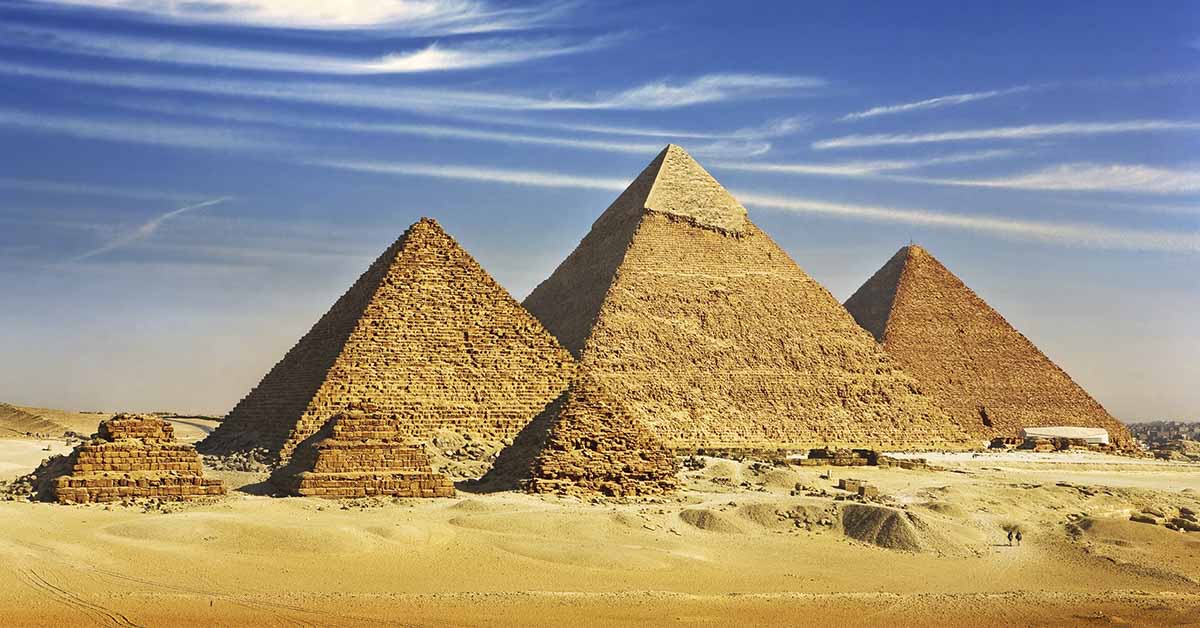The mystery behind the construction of the Great Pyramids at Giza has puzzled historians, archaeologists, and the public for centuries. With each block of limestone and granite weighing at least two tons, the logistics of how they moved those colossal stones seem insurmountable. However, recent discoveries and new scientific studies have begun to shed light on the methods employed by the ancient Egyptians in building these architectural marvels.
The Role of Ancient Waterways
One prevailing theory suggests that the ancient Egyptians used the natural resources around them, particularly the Nile River tributaries, to transport the massive stone slabs.1 A group of researchers took on an intensive study, testing fossilized soil samples from the Giza floodplain. Their analysis confirmed the existence of the ‘Khufu Branch”, a waterway branched off of the Nile long believed to have facilitated the stone slab movement.
According to environmental geographer Hader Sheisha, the discovery of this ancient waterway was crucial, as it would have been “impossible” to build the pyramids without it.2 This confirmation not only shows the resourcefulness of the ancient Egyptians, but also highlights the importance of knowing the environmental context when trying to solve a mystery thousands of years old. As environmental geographer, Hader Sheisha, aptly puts it, “Knowing more about the environment can solve part of the enigma of the pyramids’ construction”.
Read More: Paraglider Flies Over Great Pyramid of Giza and Can See What’s Written on Top
Wet Sand: An Innovative Pyramid Technique
In addition to the waterways, another potential method for moving heavy objects across the desert has been proposed by physicists at the University of Amsterdam. In a study led by Dr. Daniel Bonn, the team drew inspiration from ancient Egyptian depictions and conducted experiments involving sleds and sand. Their findings revealed that dampening the sand in front of the sled reduces friction, which would make it easier to transport exceptionally heavy loads.
By wetting the sand, motivated slaves could optimize the efficiency of their transportation methods by minimizing resistance.3 Say what you will about ancient forced labor; the Egyptians were a clever bunch. Innovative approaches like this truly show how much of an advanced understanding of physics and engineering this ancient civilization had.
Read More: 3,700-Year-Old Babylonian Stone Tablet Gets Translated, Changes History
Unraveling the Pyramid
The combination of archaeological evidence and scientific research is slowly but surely unraveling the question of how these massive stones were moved to make pyramids. Even with today’s technology, making something so large would be a massive undertaking. Bit by bit, each new revelation brings us closer to understanding the remarkable achievements this ancient civilization has accomplished. While many questions still remain, these recent discoveries pave the way for further exploration and understanding of one of Earth’s greatest mysteries.
The secrets of the Great Pyramids continue to captivate the imagination of scholars and enthusiasts alike. Through interdisciplinary collaboration and innovative research methods, we are gradually uncovering the ingenuity and resourcefulness of the ancient Egyptians. As we delve deeper into the past, we gain a greater appreciation for the remarkable feats accomplished by this ancient civilization.
Sources
- “One of Earth’s great mysteries of how the Egyptians moved pyramid stones has been solved.” Lad Bible. Katherine Sidnell. August 7, 2023.
- “The mystery of how Egypt’s great pyramids were built has finally been solved.” Indy100. Catherine Shuttleworth. August 17, 2023
- “Solved! How Ancient Egyptians Moved Massive Pyramid Stones.” Live Science. Denise Chow. May 01, 2014.

